Snake plants (Sansevieria trifasciata), also known as mother-in-law’s tongue, are popular indoor houseplants for a reason. With their striking upright leaves, architectural form, and resilience, they’re the ideal choice for beginners and busy plant parents alike. Native to West Africa, these hardy succulents are renowned for their air-purifying qualities and low-maintenance nature. But even though they’re tough, snake plants still need proper care to thrive indoors.
In this guide, you’ll learn everything you need to know to take care of a snake plant indoors—from light and soil needs to watering tips, pest control, and propagation.
1. Choosing the Right Location: Light Requirements
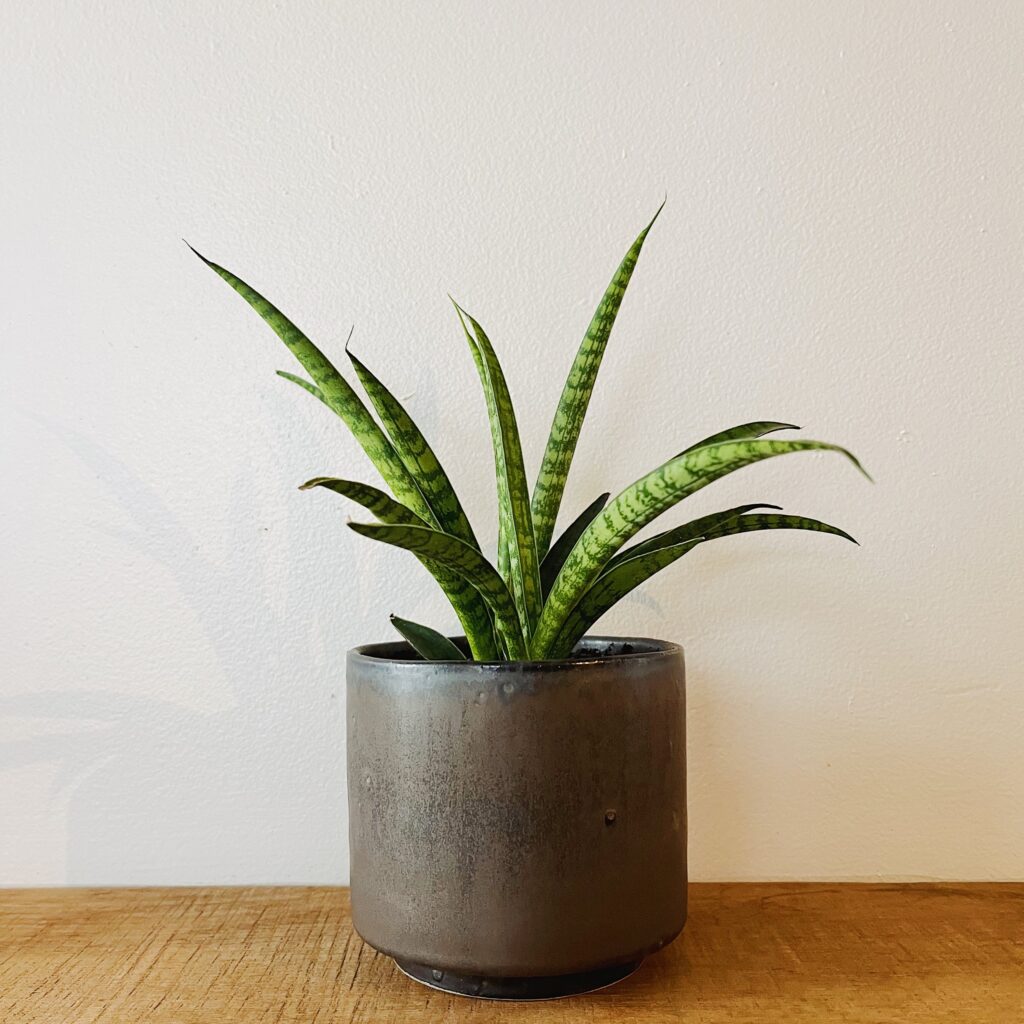
While snake plants can adapt to a variety of lighting conditions, they prefer indirect, bright light to grow best. They can also tolerate low-light environments, making them suitable for offices, bedrooms, and other indoor spaces with limited natural sunlight.
Best Light Conditions:
- Bright, indirect sunlight: Near a window with sheer curtains or east-facing windows.
- Avoid direct harsh sunlight, which can scorch the leaves.
- Tolerant of fluorescent light, making them ideal for offices.
Pro Tip: Rotate the plant every few weeks to ensure even growth on all sides.
2. The Ideal Soil Mix for Snake Plants
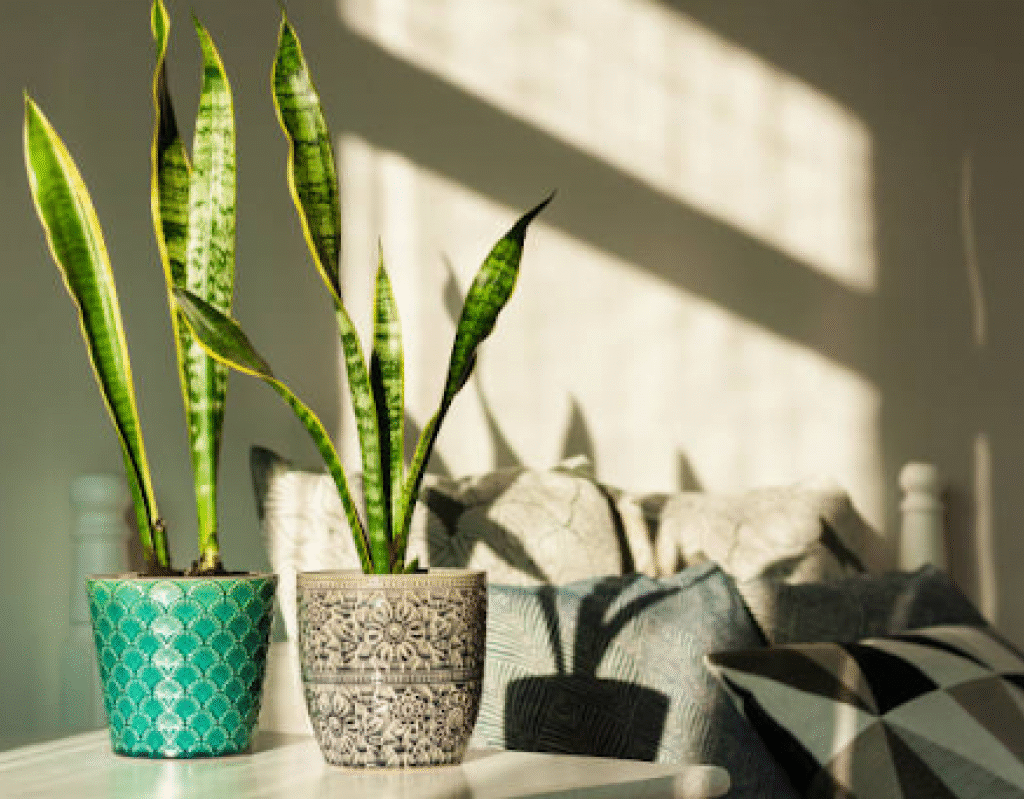
Snake plants prefer a well-draining soil mix, as their roots are susceptible to rot if kept in wet soil for too long.
Recommended Soil Composition:
- Cactus or succulent mix: Readily available and perfect for drainage.
- DIY Mix: Combine 2 parts potting soil, 1 part perlite or coarse sand, and 1 part coco coir.
Make sure the pot has drainage holes at the bottom to allow excess water to escape.
3. How Often to Water a Snake Plant
Overwatering is the most common mistake when caring for snake plants.
Watering Frequency:
- Spring and summer: Every 2–3 weeks or when the soil is completely dry.
- Fall and winter: Once every 4–6 weeks.
Watering Tips:
- Always check that the top 2–3 inches of soil are dry before watering.
- Use the “soak and dry” method—water thoroughly, then allow to dry out completely before the next watering.
- Avoid letting the plant sit in water; use a saucer that can be emptied easily.
4. Temperature and Humidity Needs
Snake plants thrive in average room temperatures and can handle some fluctuation. However, they prefer stable, moderate indoor climates.
Ideal Conditions:
- Temperature: Between 60°F and 85°F (15°C–29°C).
- Humidity: Tolerates dry air but appreciates occasional misting in extremely dry environments.
Avoid: Drafts, sudden temperature drops, and proximity to heaters or air conditioners.
5. Fertilizing Your Snake Plant
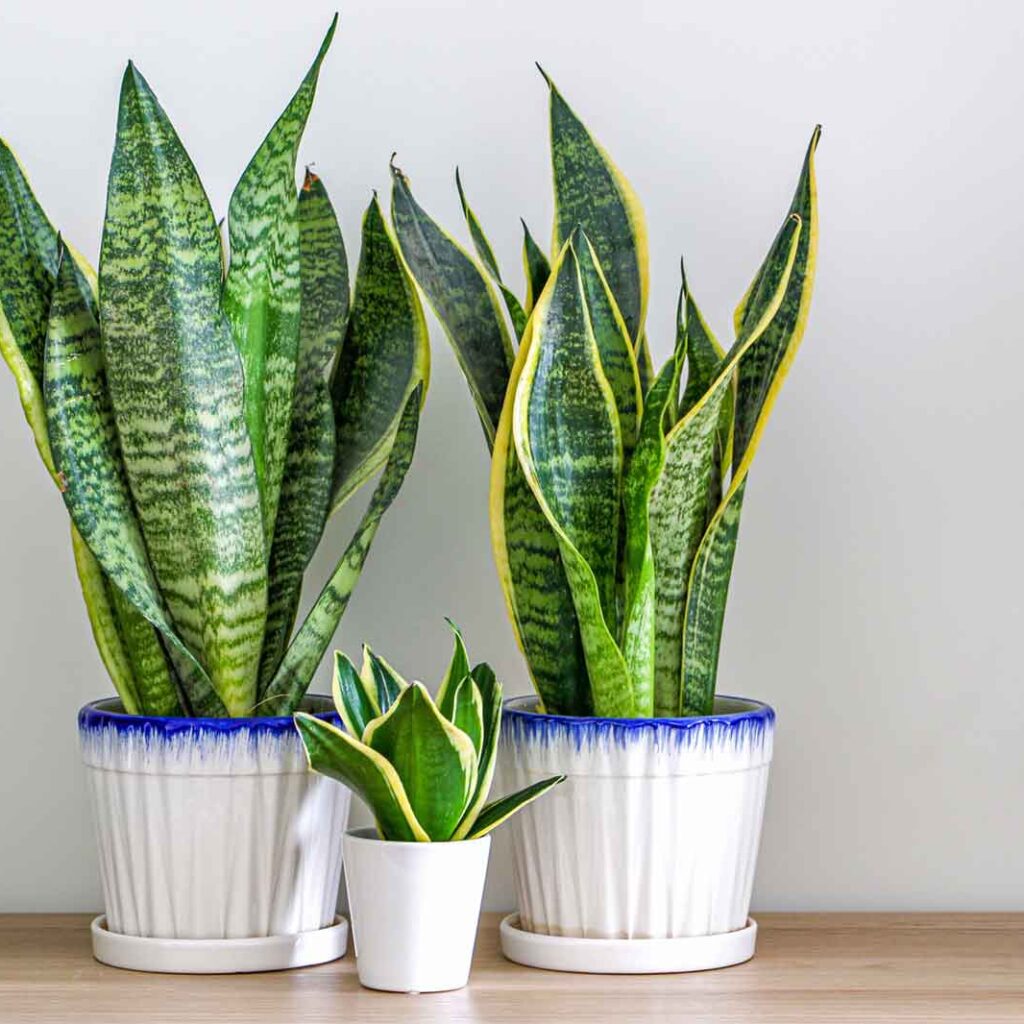
Although not heavy feeders, snake plants do benefit from occasional fertilization during their growing season.
Fertilizing Tips:
- Type: Use a balanced, diluted houseplant fertilizer or cactus/succulent feed.
- Frequency: Once a month during spring and summer. Skip fertilizing during fall and winter when the plant is dormant.
Overfertilizing can harm the plant, causing salt buildup and leaf burn.
6. Pruning and Cleaning for Better Health
Pruning isn’t essential, but it can help shape your plant and remove damaged leaves.
How to Prune:
- Use clean, sharp scissors to cut off yellow, mushy, or damaged leaves at the soil line.
- To encourage new growth, trim older, leggy leaves.
Cleaning Tips:
- Gently wipe the leaves with a damp cloth to remove dust and improve photosynthesis.
- Avoid using leaf shine products, which can clog pores.
7. Repotting Your Snake Plant
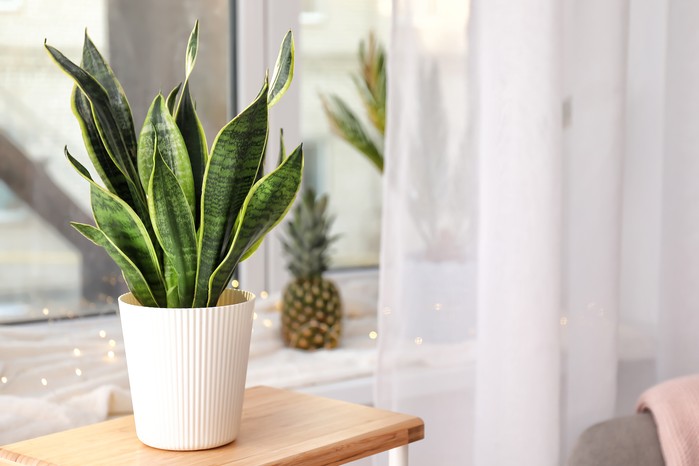
Snake plants like to be slightly root-bound but should be repotted every 2–3 years or when roots are circling the pot.
Signs It’s Time to Repot:
- Roots poking out from the drainage holes.
- Soil dries out too quickly after watering.
- Pot becomes unstable due to tall growth.
Repotting Steps:
- Choose a pot that is 1–2 inches wider in diameter.
- Refresh with new well-draining soil.
- Water lightly after repotting and allow the plant to acclimate.
8. Propagation: Grow More Snake Plants Easily
One of the best things about snake plants is how easy they are to propagate.
Propagation Methods:
- Division: Separate clumps of rhizomes during repotting.
- Leaf Cuttings in Soil:
- Cut a healthy leaf into 2–3 inch sections.
- Let cut ends callous for 1–2 days.
- Plant in a succulent mix and water sparingly.
- Leaf Cuttings in Water:
- Place a 4-inch leaf cutting in a jar of water.
- Wait for roots to develop before transferring to soil.
Be patient—it can take several weeks for new roots to appear.
9. Common Problems and How to Fix Them
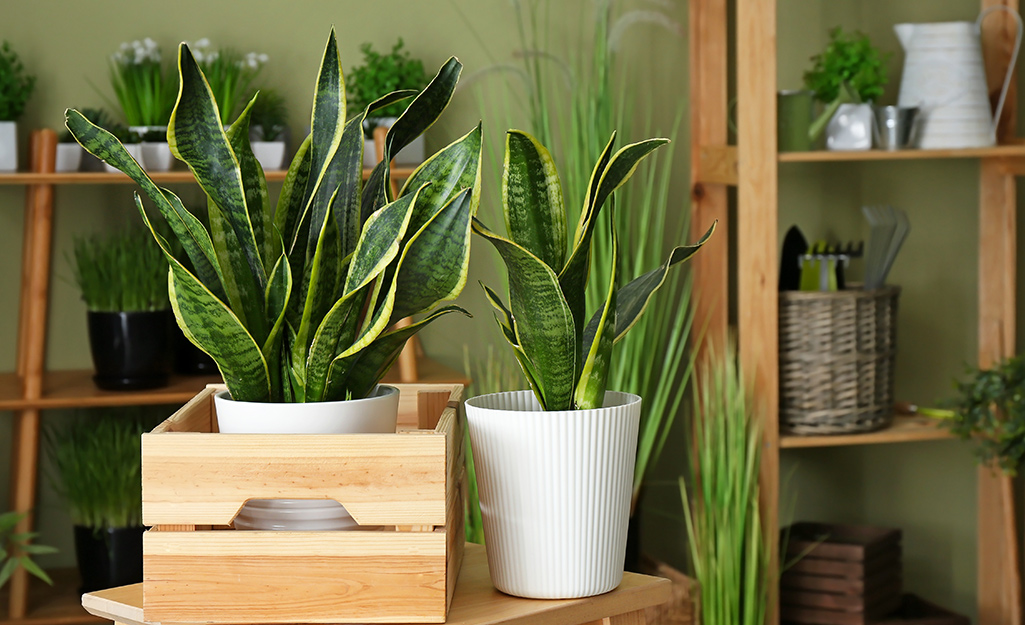
Yellow or mushy leaves: Likely due to overwatering or poor drainage. Remove affected parts and let the soil dry out.
Brown leaf tips: Often caused by dry air, inconsistent watering, or chemical buildup. Trim tips and use filtered water if needed.
No growth: Usually due to lack of light, nutrients, or a dormant season. Ensure it’s getting the right care and be patient.
Pests to Watch For:
- Mealybugs: Appear as white cottony patches. Remove with alcohol-soaked cotton swab.
- Spider mites: Fine webbing and yellow spots. Rinse the plant and increase humidity.
- Fungus gnats: Reduce watering and use sticky traps or neem oil.
10. Final Tips for Success
- Use pots with drainage holes.
- Don’t water on a schedule—check the soil.
- Keep the plant away from cold drafts and extreme heat.
- Enjoy the plant’s natural growth shape—don’t over-prune.
Conclusion: A Foolproof Plant for Indoor Gardeners
Snake plants are among the easiest and most forgiving houseplants to care for indoors. With the right balance of light, soil, and water—and a bit of occasional attention—they will reward you with years of lush green beauty. Whether you’re a novice or a seasoned gardener, taking care of a snake plant is a satisfying and low-effort way to green up your home.
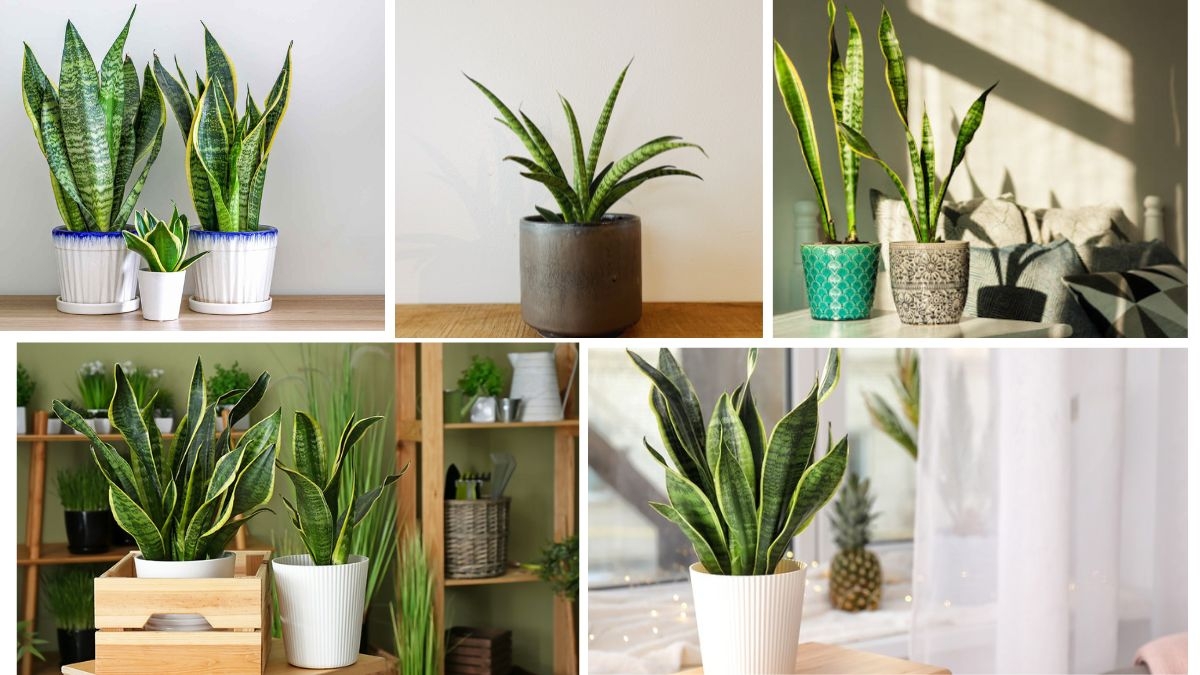



Leave A Comment